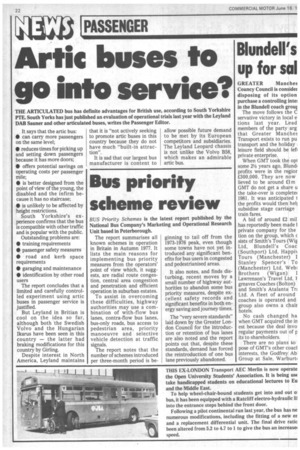Artic buses to go into service?
Page 24

If you've noticed an error in this article please click here to report it so we can fix it.
THE ARTICULATED bus has definite advantages for British use, according to South Yorkshire PTE. South Yorks has just published an evaluation of operational trials last year with the Leyland DAB Sauner and other articulated buses, writes the Passenger Editor.
It says that the artic bus: • can carry more passengers on the same level; • reduces times for picking up and setting down passengers because it has more doors; • offers potential savings on operating costs per passenger mile; • is better designed from the point of view of the young, the disabled and the infirm because it has no staircase; • is unlikely to be affected by height restrictions.
South Yorkshire's experience confirms that the bus is compatible with other traffic and is popular with the public.
Outstanding problems are: • training requirements • passenger safety measures • road and kerb space requirements • garaging and maintenance • identification by other road users The report concludes that a limited and carefully controlled experiment using artic buses in passenger service is justified.
But Leyland in Britian is cool on the idea so far, although both the Swedish Volvo and the Hungarian Ikarus have been seen in this country — the latter had braking modifications for this country by Girling.
Despite interest in North America, Leyland maintains that it is "not actively seeking to promote artic buses in this country because they do not have much "built-in attraction".
It is sad that our largest bus manufacturer is content to allow possible future demand to be met by its European competitors and subsidiaries. The Leyland Leopard chassis is not unlike the Volvo B58, which makes an admirable artic bus.
















































































































